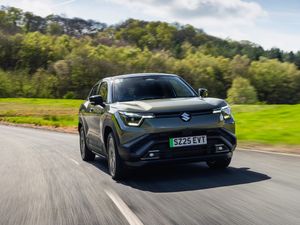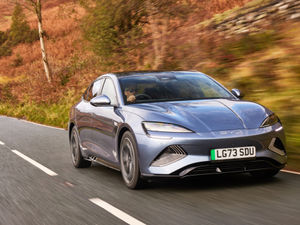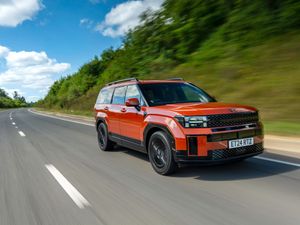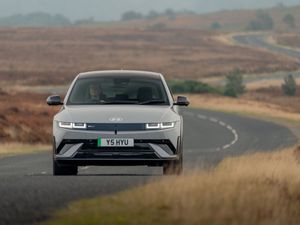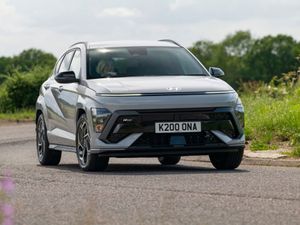First Drive: Suzuki’s S-Cross Hybrid takes on a challenging segment
The S-Cross has a whole lot of rivals – but can a new full hybrid setup keep it competitive?
What is it?

>
Suzuki has carved a nice little niche for itself by creating low-cost and frugal vehicles that also bring the option of four-wheel-drive – something that many competitors are leaning away from. It has also seriously ramped up its electrification plans, with every car in its range now incorporating some form of electrical assistance, be that mild or full hybrid.
The latter of which has now been applied to the recently-introduced S-Cross, swapping out the mild-hybrid setup (which is still available to buy) in favour of a more electric-focused full hybrid setup.
What’s new?

>
The biggest changes come underneath the S-Cross, of course, but elsewhere we’ve got plenty of standard equipment and included technology, as well as four-wheel-drive as standard through Suzuki’s AllGrip technology.
The real focus here is on value-for-money. It’s why the S-Cross Hybrid starts at a very competitive £26,749, undercutting many rivals in the process. That said, opt for the full-whack Ultra grade and this does push the price up to £31,549 and, at that point, it starts to make a little less sense.
What’s under the bonnet?

>
Whereas some other cars in Suzuki’s range utilise Toyota technology, the S-Cross Full Hybrid does with an in-house setup. It’s centred around a 1.5-litre naturally-aspirated petrol engine, which is then linked to an electric motor and battery. Suzuki says that the combination should bring up to 48.7mpg and CO2 emissions of 132g/km for the four-wheel-drive version, those these do improve on the two-wheel-drive model.
Linked to an automated manual gearbox, this setup brings 0-60mph in 13.3 seconds and a top speed of 108mph. Again, you’ll see slightly quicker acceleration figures from the two-wheel-drive version so, if slightly sprightlier performance is what you’re after, you’re better suited to go for that option.
What’s it like to drive?

>
The light steering that you get from the S-Cross makes it easy to get along with from the off. There’s decent visibility, too, with that high riding position that is so key to this segment’s popularity present and correct. It does actively manage between petrol and full EV modes, and the switch to battery power is largely unnoticeable. It ran in EV-only mode for quite a portion of our drive, in fact.
However, that automated manual is central to the somewhat compromised driving experience that you get from the S-Cross. It’s incredibly slow and dim-witted and makes any kind of forward progression difficult. In fact, the delay is so bad that it feels like the S-Cross is fitted with a large, laggy turbocharger, rather than a naturally-aspirated engine. A broken ride doesn’t help the S-Cross an awful lot, either.
How does it look?

>
There’s nothing to separate the S-Cross Full Hybrid from the mild one. It would’ve been quite nice to see a couple of styling elements to differentiate the two, but even without these choice accents it’s still a largely good-looking thing – to our eyes at least.
The front lights are sharp in their design, while the ones at the back incorporate a full-width design that is so popular across the motoring industry at the moment. There’s nothing controversial nor eye-catching about the look of the S-Cross but, for many people, that won’t be a bad thing in the slightest.
What’s it like inside?

>
The S-Cross is nicely kitted out inside with plenty of features and controls. As we’ve mentioned the forward view is good, giving that all-important elevated view of the road ahead. The material quality isn’t the best, mind you, with sharp scratchy plastics littering much of the lower section of the cabin. It all appears just a little bit dated, with the drab colours only contributing to the feel.
In terms of boot space, the S-Cross Full Hybrid falls shy of the regular mild-hybrid; you get 295 litres as standard in the former, which is some way shy of the 430 litres you get in the latter. It’s also a long way off many of its rivals. The Nissan Qashqai e-Power hybrid, for instance, packs a healthy 504 litres, for example.
What’s the spec like?

>
Suzuki has always focused on value-for-money and that’s definitely the case with the S-Cross Hybrid. It’s packed with standard equipment, with highlights such as 17-inch alloy wheels, LED headlights, dual-zone climate control and keyless entry and start all included on entry-level Motion cars. Bump up to Ultra specification and you’ll get a panoramic sunroof and a 360-degree parking camera but, as we mentioned, this increases the price of the S-Cross a little too high.
The infotainment setup on the S-Cross feels a little behind the times, in truth, with the eight-inch display on our ‘Ultra’ grade cars being a touch unresponsive during our time with the car.
Verdict
If you dialled back the clock a few years, the S-Cross Hybrid would feel like an attractive proposition. After all, it’s well-specified and does have efficiency on its side. However, that powertrain and its unrefined, slow-to-respond nature feels significantly behind the times today.
The fact that it’s even less practical than the regular car isn’t great, either. If you do fancy yourself behind the wheel of the S-Cross we’d urge you to go for the regular 1.4-litre turbocharged petrol version but against such prominent and rounded competition, the S-Cross Hybrid is a tricky car to recommend.

